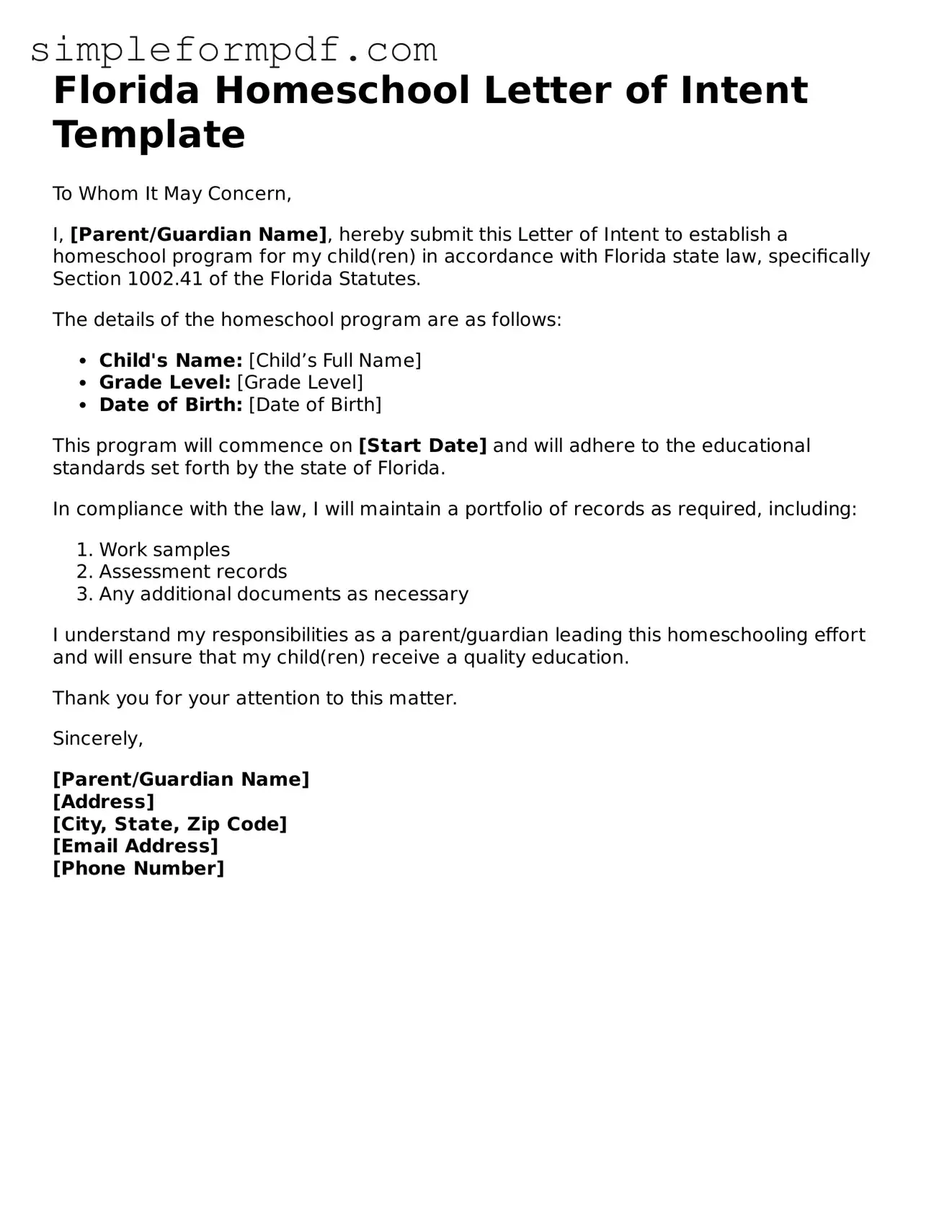Free Homeschool Letter of Intent Form for the State of Florida
The Florida Homeschool Letter of Intent is a formal document that parents submit to notify the local school district of their intention to homeschool their children. This letter serves as an essential step in establishing a homeschooling program, ensuring compliance with state regulations. For those ready to embark on this educational journey, filling out the form is a crucial first step—click the button below to get started.
Launch Editor
